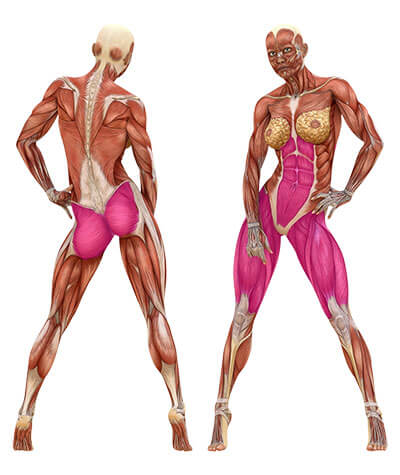Squats are one of the most powerful and effective exercises in any fitness routine. They primarily target the lower body, engaging key muscle groups like the quadriceps, hamstrings, and glutes. As a compound movement, squats stimulate multiple muscle groups at once, making them an excellent choice for building strength, boosting athletic performance, and burning fat efficiently.
Whether you’re looking for the best compound lower body exercise or a leg strengthening workout at home, squats deserve a place in your plan.
The Power of Squats: Why You Should Be Doing Them
Incorporating squats into your weekly training offers a wide range of benefits. From improving lower body strength and mobility to enhancing posture and balance, squats are a versatile tool for fitness enthusiasts at all levels.
Here’s why squats are so effective:
- Boost muscle mass in the legs and glutes
- Support fat loss through increased calorie burn
- Improve core strength and stability
- Enhance functional movements like walking, climbing, and jumping
For beginners just getting started, squats are among the most rewarding exercises. In fact, one of the top squat benefits for beginners is how easily they can be scaled with or without weights.
Major Muscles Targeted by Squats
Squats target several major muscles:
- Quadriceps: Located at the front of the thigh, they help extend your knees during the squat movement.
- Hamstrings: Found at the back of your thigh, they assist in hip extension and knee stabilization.
- Glutes: Your gluteus maximus is one of the largest muscles in the body and plays a critical role in powerful hip drive. Squats are also excellent glute activation exercises.
- Core: The core muscles, including the abdominals and obliques, stabilize your spine and keep your form solid.
These muscle groups work together to make squats a truly full-body functional movement.
Secondary Muscles Engaged
While squats primarily hit the lower body, several secondary muscles also get activated:
- Calves: Help with balance and control.
- Hip adductors and abductors: Assist with stability and proper knee tracking.
- Lower back and spinal erectors: Offer support and prevent injury during heavy lifting.
This makes squats one of the most comprehensive leg exercises you can perform.
Proper Form and Technique: How to Improve Squat Form
Performing squats with proper technique is key to maximizing results and avoiding injury. Here’s how to improve your squat form:
- Start with feet shoulder-width apart, toes slightly pointed out.
- Keep your chest up and back neutral throughout the movement.
- Lower your hips until your thighs are at least parallel to the ground.
- Push through your heels to return to standing.
A helpful cue is to imagine sitting back into a chair. Practicing in front of a mirror or filming your form can help you correct posture issues. If you’re doing a leg strengthening workout at home, bodyweight squats are a great place to begin.

Credit: www.inspireusafoundation.org
Popular Squat Variations to Try
Mixing up your squat routine can help target muscles from different angles and avoid plateaus. Here are some effective variations:
- Barbell Back Squats: Ideal for building overall strength and power.
- Goblet Squats: Perfect for beginners and improving core engagement.
- Bulgarian Split Squats: Great for isolating each leg and improving balance.
- Jump Squats: Add a cardio and explosive element to your routine.
Each of these options offers a unique benefit and contributes to a more balanced lower-body workout.
Incorporating Squats Into Your Workout Plan
To see noticeable results, consistency is key. For most individuals, performing squats 2–3 times per week is optimal.
Try starting with:
- 3 sets of 10–12 reps if you’re a beginner
- Gradually increase the load or reps as you gain strength
Combine squats with exercises like lunges, deadlifts, and calf raises to create a complete lower body routine. If you’re short on time, bodyweight squats can be added to a quick 15-minute home leg workout.
Common Squat Mistakes to Avoid
Squats are only effective when done correctly. Here are some common errors to watch out for:
- Leaning too far forward or rounding the back
- Neglecting warm-up or mobility work
- Lifting too heavy without proper form
- These mistakes can lead to injuries or muscle imbalances. Focus on quality over quantity, engage your core, and use full range of motion. If you’re unsure, consulting a certified trainer or watching instructional videos can help correct your form.
Conclusion: Why Squats Belong in Every Workout
Squats are more than just a leg exercise—they’re a foundation of functional fitness. From boosting strength and muscle growth to improving posture and athletic performance, squats offer incredible returns for your effort.
By regularly incorporating them into your workouts, you can:
- Strengthen your legs and glutes
- Burn calories efficiently
- Improve daily functional movements
- Develop core stability
Whether you’re at home or in the gym, squats are one of the best compound lower body exercises you can do. Start squatting today and experience the full-body benefits for yourself.

